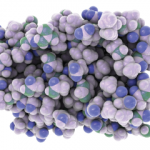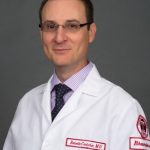Conclusion
These two cases highlight the disparate clinical courses that may be experienced by patients with rheumatic disease who are infected by SARS-CoV2. The immunologic mechanisms underpinning the more severe manifestations of COVID-19 have not yet been elucidated, and observations such as these may begin to provide some clarity.
It is important, however, to acknowledge limitations in interpreting these cases. In particular, the clinical course of COVID -19 may be highly heterogeneous, even among patients with otherwise similar characteristics. The relative contribution of other potential risk-factors (e.g., gender, genetic milieu and concomitant medications) is impossible to differentiate from the impact of the biologic agents used for each patient.
That said, these cases raise intriguing questions regarding the pathogenesis of COVID-19. The potential risks and benefits of specific immunosuppressive agents for patients with COVID-19 and the potential role of biologic agents for the management of severe COVID-19 warrant further study.

Dr. Marcos
Luis A. Marcos, MD, MPH, is an infectious diseases physician, Associate Professor, Department of Medicine, Stony Brook University Renaissance School of Medicine, N.Y.

Dr. Sharmeen
Saika Sharmeen, DO, is a rheumatologist and an assistant professor in the Department of Medicine, Division of Rheumatology, Allergy and Immunology, Stony Brook University Renaissance School of Medicine, N.Y.

Dr. Gonzalez
Jaime Gonzalez, MD, is an infectious diseases fellow, Department of Medicine, Stony Brook University Renaissance School of Medicine, N.Y.

Dr. Yao
Qingping Yao, MD, PhD, is a rheumatologist, Professor, Department of Medicine, Chief, Division of Rheumatology, Allergy and Immunology, Stony Brook University Renaissance School of Medicine.

Dr. Fries
Bettina Fries, MD, is an infectious diseases physician, professor and chief of the Division of Infectious Diseases, Department of Medicine, Stony Brook University Renaissance School of Medicine, N.Y.

Dr. Fuhrer
Jack Fuhrer, MD, is an associate professor of medicine and faculty member of the Division of Infectious Diseases. He is also the director of the HIV Treatment Center, and associate dean for admissions for the Renaissance School of Medicine at Stony Brook University, N.Y.
References
- Zhou P, Yang X-L, Wang X-G, et al. A pneumonia outbreak associated with a new coronavirus of probable bat origin. Nature. 2020 Mar;579(7798):270–273.
- World Health Organization. Coronavirus disease 2019 (COVID-19) Situation Report – 78. 2020 Apr 7. https://www.who.int/emergencies/diseases/novel-coronavirus-2019/situation-reports.
- Kostik MM, Dubko MF, Masalova VV, et al. Identification of the best cutoff points and clinical signs specific for early recognition of macrophage activation syndrome in active systemic juvenile idiopathic arthritis. Semin Arthritis Rheum. 2015 Feb;44(4):417–422.
- Parodi A, Davì S, Pringe AB, et al. Macrophage activation syndrome in juvenile systemic lupus erythematosus: A multinational multicenter study of thirty-eight patients. Arthritis Rheum. 2009 Nov;60(11):3388–3399.
- Huang C, Wang, Y, Li X, et al. Clinical features of patients infected with 2019 novel coronavirus in Wuhan, China. Lancet. 2020 Feb 15;395(10223):497–506.
- Grom AA, Horne A, De Benedetti F. Macrophage activation syndrome in the era of biologic therapy. Nat Rev Rheumatol. 2016 May;12(5):259–268.
- Ruperto N, Brunner HI, Quartier P, et al. Two randomized trials of canakinumab in systemic juvenile idiopathic arthritis. N Engl J Med. 2012 Dec 20;367(25):2396–2406.
- De Benedetti F, Brunner HI, Ruperto N, et al. Randomized trial of tocilizumab in systemic juvenile idiopathic arthritis. N Engl J Med. 2012 Dec 20;367(25):2385–2395.
- Shakoory B, Carcillo JA, Chatham WW, et al. Interleukin-1 receptor blockade is associated with reduced mortality in sepsis patients with features of macrophage activation syndrome: Reanalysis of a prior phase III trial. Crit Care Med. 2016 Feb;44(2):275–281.
- Xu X, Han M, Li T, et al. Effective treatment of severe COVID-19 patients with tocilizumab. ChinaXiv:20200300026. 2020.
- Wesemann DR, Benveniste EN. STAT-1 alpha and IFN-gamma as modulators of TNF-alpha signaling in macrophages: regulation and functional implications of the TNF receptor 1:STAT-1 alpha complex. J Immunol. 2003 Nov 15;171(10):5313–5319.
- Parameswaran N, Patial S. Tumor necrosis factor-α signaling in macrophages. Crit Rev Eukaryot Gene Expr. 2010;20(2):87–103.
- Paludan SR. Synergistic action of pro-inflammatory agents: Cellular and molecular aspects. J Leukoc Biol. 2000 Jan;67(1):18–25.
- Lounder DT, Bin Q, de Min C, Jordan MB. Treatment of refractory hemophagocytic lymphohistiocytosis with emapalumab despite severe concurrent infections. Blood Adv. 2019 Jan 8;3(1):47–50.
- Vallurupalli M, Berliner N. Emapalumab for the treatment of relapsed/refractory hemophagocytic lymphohistiocytosis. Blood. 2019 Nov 21;134(21):1783–1786.
- Wesemann DR, Benveniste EN. STAT-1 alpha and IFN-gamma as modulators of TNF-alpha signaling in macrophages: Regulation and functional implications of the TNF receptor 1:STAT-1 alpha complex. J Immunol. 2003 Nov 15;171(10):5313–5319.
- Ali T, Kaitha S, Mahmood S, et al., Clinical use of anti-TNF therapy and increased risk of infections. Drug Healthc Patient Saf. 2013;5:79–99.
- Zou Z, Yan Y, Shu Y, et al. Angiotensin-converting enzyme 2 protects from lethal avian influenza A H5N1 infections. Nat Commun. 2014 May 6;5:3594.
- Haga S, Yamamoto N, Nakai-Murakami C, et al. Modulation of TNF-alpha-converting enzyme by the spike protein of SARS-CoV and ACE2 induces TNF-alpha production and facilitates viral entry. Proc Natl Acad Sci U S A. 2008 Jun 3;105(22):7809–7814.
- Wang W, Ye L, Ye L, et al. Up-regulation of IL-6 and TNF-alpha induced by SARS-coronavirus spike protein in murine macrophages via NF-kappaB pathway. Virus Res. 2007 Sep;128(1–2):1–8.
- Kolls JK, Khader SA. The role of Th17 cytokines in primary mucosal immunity. Cytokine Growth Factor Rev. 2010 Dec;21(6):443–448.
- Kumar P, Monin L, Castillo P, et al. Intestinal interleukin-17 receptor signaling mediates reciprocal control of the gut microbiota and autoimmune inflammation. Immunity. 2016 Mar 15;44(3):659–671.
- Ivanov II, Atarashi K, Manel N, et al. Induction of intestinal Th17 cells by segmented filamentous bacteria. Cell. 2009 Oct 30;139(3):485–498.
- Chen K, Kolls JK. T cell-mediated host immune defenses in the lung. Annu Rev Immunol. 2013;31:605–633.
- Crowe CR, Chen K, Pociask DA, et al. Critical role of IL-17RA in immunopathology of influenza infection. J Immunol. 2009 Oct 15;183(8):5301–5310.
- Xu Z, Shi L, Wang Y, et al. Pathological findings of COVID-19 associated with acute respiratory distress syndrome. Lancet Respir Med. 2020 Apr;8(4):420–422.
- Wu D, Yang XO. TH17 responses in cytokine storm of COVID-19: An emerging target of JAK2 inhibitor fedratinib. J Microbiol Immunol Infect. 2020 Mar 11 [online ahead of print].
Updated and revised April 13, 2020.



